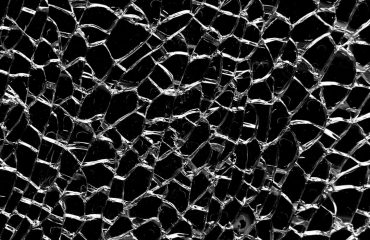In the fast-paced world of video and audio production, post-production is where the magic truly happens. But even the most creative vision can be marred by technical flaws. That’s where post-production quality monitoring (PQM) steps in – a crucial process ensuring your final product meets the highest standards of quality and professionalism. This comprehensive guide explores the intricacies of PQM, helping you deliver flawless audio and video every time.
1. Establishing Clear Quality Standards and Expectations
Before diving into the technical aspects, defining clear quality standards is paramount. This involves outlining specific expectations for audio and video, considering factors like:
- Target Audience: Are you producing content for a casual online audience or a high-definition broadcast? This dictates the acceptable level of noise, compression artifacts, and other imperfections.
- Project Scope: A short social media video will have different quality requirements than a feature-length documentary.
- Technical Specifications: Determine the desired resolution, frame rate, bitrate, and audio sampling rate. These specifications should be documented and communicated to the entire post-production team.
- Style Guide: Establish a style guide outlining preferred color grading, audio mixing techniques, and overall aesthetic. Consistency is key to maintaining a professional look and feel.
- Client Expectations: If working with a client, clearly communicate your quality control process and involve them in setting expectations to avoid misunderstandings later.
Creating a detailed checklist based on these standards will streamline the PQM process and ensure consistency throughout the project.
2. Implementing Effective Audio Quality Control
Audio quality often significantly impacts the viewer experience. Effective audio QC involves several steps:
- Noise Reduction and Leveling: Identifying and removing background noise, hiss, hum, and other unwanted sounds is crucial. Tools like Adobe Audition and iZotope RX provide advanced noise reduction capabilities.
- Dialogue Clarity and Editing: Ensuring dialogue is clear, intelligible, and free from pops, clicks, and other imperfections is essential. This often involves careful editing and potentially ADR (Automated Dialogue Replacement).
- Sound Design and Mixing: Creating a balanced and immersive soundscape requires careful attention to mixing levels, panning, and the overall sonic palette. A skilled audio engineer is essential for this process.
- Frequency Response and Dynamic Range: Monitoring the frequency response to ensure a clear and balanced sound across the entire spectrum is vital. Similarly, managing dynamic range prevents clipping and ensures consistent loudness.
- Monitoring on Different Systems: Checking audio quality across various playback devices (headphones, speakers, different audio systems) helps identify potential issues that might be missed on a single system.
Regular listening tests throughout the post-production process are crucial for identifying and addressing audio issues early on.
3. Ensuring Superior Video Quality Control
Video quality is equally important, encompassing various aspects:
- Resolution and Frame Rate: Verify that the final video matches the target specifications. Inconsistent frame rates or resolutions can lead to playback issues.
- Color Grading and Correction: Ensuring consistent color throughout the video is crucial. Color grading tools allow for adjustments to achieve a desired look and feel, while color correction addresses imbalances and inconsistencies.
- Image Sharpness and Clarity: The video should be sharp and clear, free from blurriness, artifacts, or compression artifacts. Tools like sharpening filters can enhance clarity, but overuse can lead to unnatural results.
- Motion Blur and Jitter: Excessive motion blur or camera shake can negatively impact the viewing experience. Stabilization tools can help mitigate these issues.
- Visual Effects and Compositing: If visual effects are used, careful compositing is necessary to ensure seamless integration and avoid noticeable seams or inconsistencies.
Visual inspections throughout the process, coupled with the use of waveform monitors and vectorscopes, are vital for ensuring optimal video quality.
4. Utilizing Post-Production Quality Control Tools and Software
Numerous software tools facilitate PQM. These range from simple waveform monitors and vectorscopes to advanced analysis software:
- Waveform Monitors: These display the audio signal’s amplitude over time, helping identify clipping, low levels, and other issues.
- Vectorscopes: These visualize the color information in the video, aiding in color grading and correction.
- Histogram Monitors: These show the distribution of brightness levels in the video, helping optimize exposure and contrast.
- Audio Editing Software (e.g., Adobe Audition, Pro Tools): These provide advanced tools for noise reduction, equalization, and mixing.
- Video Editing Software (e.g., Adobe Premiere Pro, DaVinci Resolve): These offer tools for color correction, stabilization, and visual effects.
- Specialized QC Software: Some software packages are specifically designed for post-production quality control, offering automated checks and reporting.
Choosing the right tools depends on the project’s complexity and budget.
5. Establishing a Robust Workflow for Post-Production Quality Monitoring
A well-defined workflow is critical for effective PQM. This involves:
- Regular Checks at Each Stage: Don’t wait until the end of post-production to check for quality issues. Regular checks throughout the process allow for early detection and correction.
- Dedicated QC Personnel: Assigning dedicated quality control personnel ensures a thorough and unbiased review.
- Version Control: Maintaining version control allows for easy comparison and rollback if necessary.
- Clear Communication: Open communication between editors, sound engineers, and other team members is vital for addressing quality issues effectively.
- Documentation and Reporting: Documenting all quality control checks and generating reports helps track progress and identify recurring issues.
A streamlined workflow minimizes errors and ensures a consistent level of quality throughout the project.
By diligently following these steps, you’ll significantly enhance the quality of your video and audio productions, ultimately delivering a polished and professional final product.
Tags: post-production, quality monitoring, audio quality, video quality, QC




